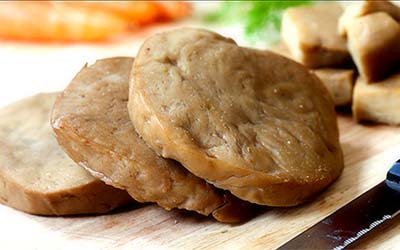Oct. 09, 2020
Gluten (wheat gluten protein) is a kind of natural plant protein obtained from wheat, corn and other grains through scientific processing. The crude protein content is more than 75%. It is composed of gliadin and gluten in about 1 :1 ratio of composition.
Gluten has strong water absorption, viscoelasticity, film formability, adhesive thermal coagulation, liposuction and emulsification, and other physical properties. It is also rich in functional amino acids such as glutamine. At present, glutamic acid is widely used in the food processing industry and animal nutrition and feed industries to improve the taste and nutritional characteristics of food, and to increase the nutritional value of feed. It has good application prospects.
The application of gluten in food
Gluten has good water holding capacity and viscoelasticity. It can maintain the moisture inside the bread, delay the aging and taste of the bread, make the bread have a uniform texture, moderate elasticity and better taste, and at the same time improve the nutritional balance of the pastry products.
Many studies have shown that adding gluten can increase the protein content of noodles, increase the hardness, viscoelasticity, resilience, and maximum shear force of noodles, and promote the formation of gluten network structure. In addition, the addition of gluten to the dough can also change the rheological properties of the flour, so as to reduce the stability time of the dough, reduce the degree of weakening, and improve the overall index.

The use of gluten in meat products can improve the viscoelasticity and thermosetting properties of meat products, and can be used as a binder.
In the early days, plastic products were commonly used in food packaging, but plastic products have the disadvantage of being difficult to degrade and affecting the inherent flavor of packaged food. Gluten has the advantages of uniform texture, strong mechanical properties, relatively insoluble in water, degradable, and biocompatible. It can be widely used in the production of edible film.
Previous: Application of potassium sorbate